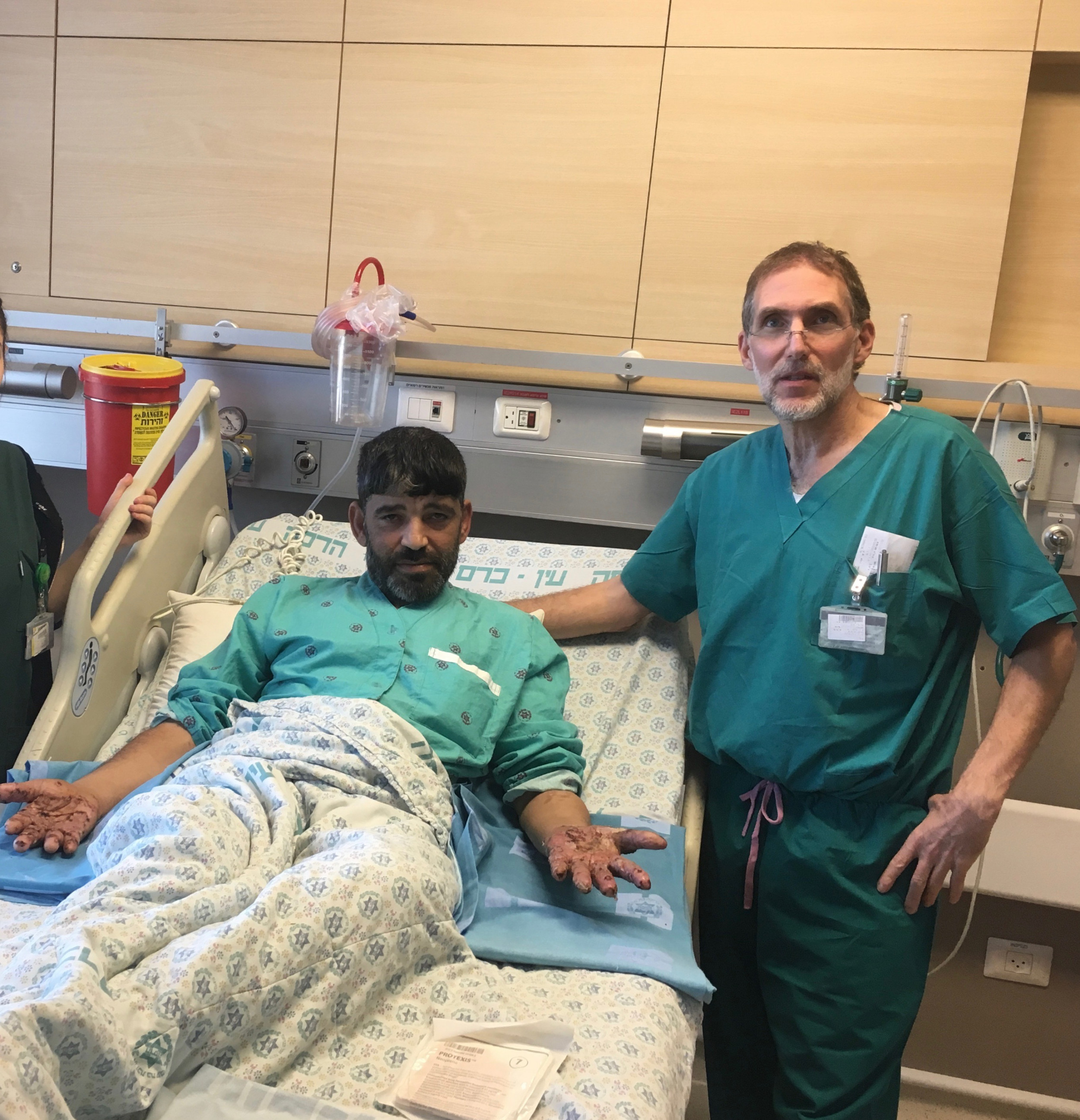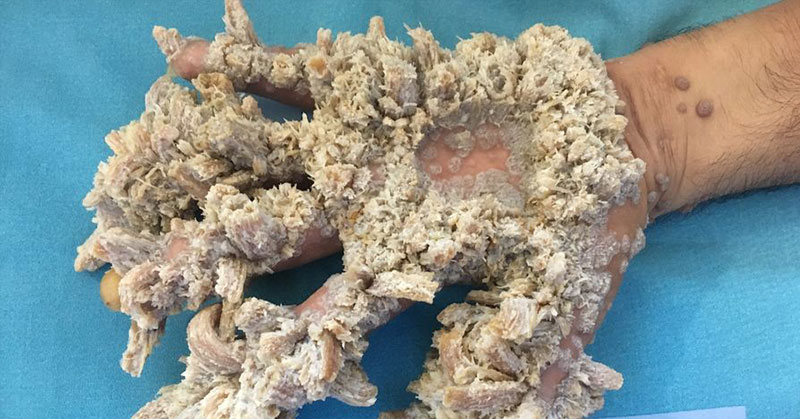A rare disease known as “tree man syndrome” has made its way into headlines a number of times over the last few years.
Known medically as epidermodysplasia verruciformis (EV), it causes the growth of wood-like lesions on the skin.
One victim of “tree man syndrome” is a 44-year-old Gaza man named Mahmoud Taluli. For more than a decade, his battle with EV has prevented him from using his hands. (1)
In the last couple of years, Taluli has undergone four surgeries in hopes of removing the lesions once and for all.
But, it wasn’t until the most recent surgery — a pioneering treatment at Jerusalem’s Hadassah Medical Center — that Taluli has left the hospital with a true sense of hope.
What is EV, or “tree man syndrome”?

According to Genetic and Rare Diseases Information Center, EV “is a rare inherited genodermatosis characterized by chronic infection with human papillomavirus (HPV) leading to polymorphous cutaneous lesions.” It also leads to an increased risk of individuals developing non-melanoma skin cancer. (2)
Put more simply, EV is a condition that prohibits certain individuals from fighting off HPVs.
“After years of suffering and solitude, I can finally live a normal life,” said Taluli.
A younger man in Bangladesh by the name of Abul Bajandar is also suffering through the same rare disease right now. Sadly, but understandably, he has expressed his desire to amputate his hands. (3)
“Amputation is a nonstarter that would create more problems,” said Michael Chernofsky, the senior hand and microvascular surgeon at Hadassah who’s overseeing Taluli’s treatment. “But I really feel bad for this patient in Bangladesh, and it seems like his desire for amputation is an index of his frustration levels.”
Mahmoud Taluli’s recovery

It has not been an easy road and it’s by no means over.
Recognizing that Taluli kept reinfecting himself by touching lesions and then touching other parts of his body, the doctors have attempted to remove the entire lesion — including the root — in order to remove the entire infected area as well as take pressure off of the compressed nerves.
“You can’t just shave these off at the surface. You have to remove every last shred,” said Chernofsky. “In the beginning, I wasn’t sure our approach would work. We didn’t know if there would be anything viable left of his hands, but thank God it’s working.”
The doctors have used a number of instruments including scalpels to remove thousands of bark-like lesions. In the long-run, this will help. However, these incisions are often deep enough to require skin grafts to improve the healing process.
That said, receiving these treatments has saved his hands and allowed him to use his hands like he used to for the first time in ten years.
Related: After 20 years, Mexican scientist may have eradicated human papillomavirus
The healing process

Now, doctors at Hadassah Medical Center are attempting to map Taluli’s genome. This would help to pinpoint what exactly in his genetic makeup is keeping his body from fighting HPVs.
It doesn’t help that his genetic mutation is unlike other people with the same condition.
As a result, doctors hope to develop an immunological-based treatment specific to his immune system. Until then, Taluli is counting his blessings.
“The surgery has completely changed my life,” he wrote NPR. “I can play with my children. I can go to family events. I no longer need to cover my hands when I go out in public.” (1)
Read More: Common Myths About Sexual Health You Need to Stop Believing

